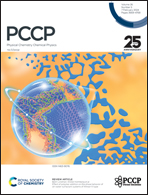Two-dimensional quadratic Weyl points, nodal loops, and spin–orbit Dirac points in PtS, PtSe, and PtTe monolayers
Abstract
Topological quasiparticles have garnered significant research attention in condensed matter physics. However, they are exceedingly rare in two-dimensional systems, particularly those hosting unconventional topological quasiparticles. In this work, employing first-principles calculations and symmetry analysis, we demonstrate that PtS, PtSe, and PtTe monolayers serve as high-quality two-dimensional topological semimetal materials. These materials exhibit multiple types of topological quasiparticles around the Fermi level in the absence of spin–orbit coupling, such as conventional linear Weyl points and unconventional quadratic Weyl points in the PtS monolayer, as well as nodal loops in PtSe and PtTe monolayers. When spin–orbit coupling (SOC) is introduced, a tiny gap opens, transforming the systems into quantum spin hall insulators. Simultaneously, three spin–orbit Dirac points, robust against SOC, appear at the X, Y, and M points. We illustrate the symmetry protection, low-energy effective model, and edge states of these topological states. Our work provides an excellent material platform for studying novel two-dimensional topological quasiparticles and topological insulators.



 Please wait while we load your content...
Please wait while we load your content...